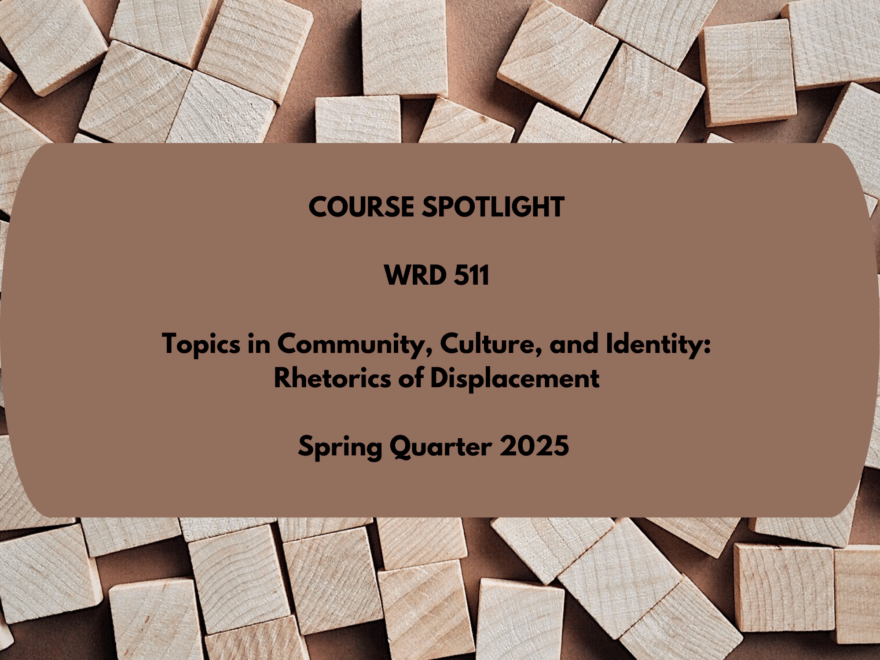In the upcoming Spring Quarter, Dr. Monica Reyes will be exploring counterstories and how, as rhetors, students can shift their perspective from harmful narratives. With a focus on the stories of immigrants and refugees, WRD 511: Rhetorics of Displacement focuses on pushing back against stereotypical, limiting language surrounding these communities. While learning how to move away from the ‘helpless’ immigrant and refugee narrative, students will discover how to critically and empathetically amplify the true experiences of these groups.
What is a Counterstory?
Influenced by cultural rhetorician Aja Martinez’s concept of the counterstory, Dr. Reyes explains that “Martinez’s description of counterstory can be summarized as a story meant to undermine and revise the detrimental hegemonic narratives that have produced and discredited mnoritized people’s experiences.” Dr. Reyes identifies three approaches that will be the main focus of the course: crafting stories that emphasize active identity, resisting one-size-fits-all ideas of empowerment, and understanding how stories connect across borders and cultures.
Learning Objectives and Outcomes
The course is broken up into five units: first-person perspectives; screenings, accounts, and credibility; games and technology; humanitarianism, volunteerism, and activism; and literature.
Students will hear stories from different mediums to further understand the relationship between story and rhetoric. From board games, podcasts, graphic novels, and academic journals, Dr. Reyes’s emphasis on an interdisciplinary approach will allow students to explore and understand the value of different kinds of storytelling.
Students will also get the opportunity to partner with a nonprofit that works with refugees or asylum seekers. “During the COVID-19 pandemic,” explains Dr. Reyes in the most recent issue of Composition Studies “the class partnered virtually with La Posada Providencia in San Benito, Texas; in 2023, my students worked with World Relief in Chicago. Students talked with non-profit clients 2-3 times throughout the quarter for about an hour via Zoom to learn about the organization and the clients themselves.” Students used these conversations to “develop project ideas for their Collaborative Counterstory Assignment. This assignment pairs a student with someone who has been displaced to help them tell a counterstory about themselves that resists the hegemonic narrative about the displacement experience.” This upcoming quarter, Dr. Reyes hopes to work with organizations like Nuevos Vecinos and invite guest speakers with direct experience in asylum work and migrant studies. With growing fear around the safety and stability of places like Chicago, the opportunity to hear stories of those doing the work now will be more critical than ever.
Key Takeaways
This course offers students critical insight into cultural rhetorics pedagogy and approaches to learning. The local and global geopolitical contexts of the issues discussed in this course are paramount for students to understand so that they can see their impact on policies and advocacy. Understanding this context will also further students’ engagement with displacement narratives.
If you are interested in cultural rhetorics and the power of story, register for WRD 511: Rhetorics of Displacement in Spring 2025! Visit Course Spotlights to explore other courses that will be available this upcoming quarter.
